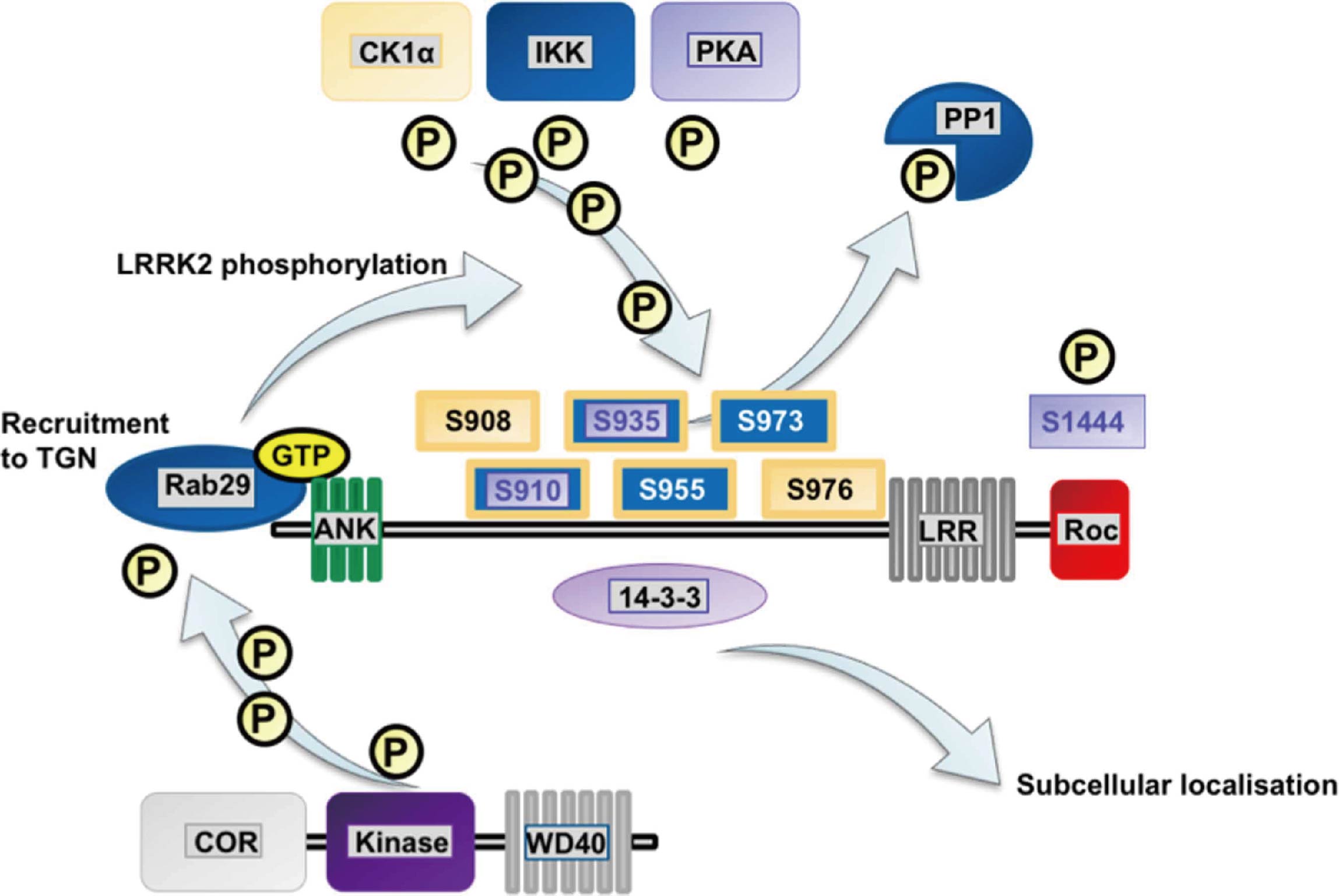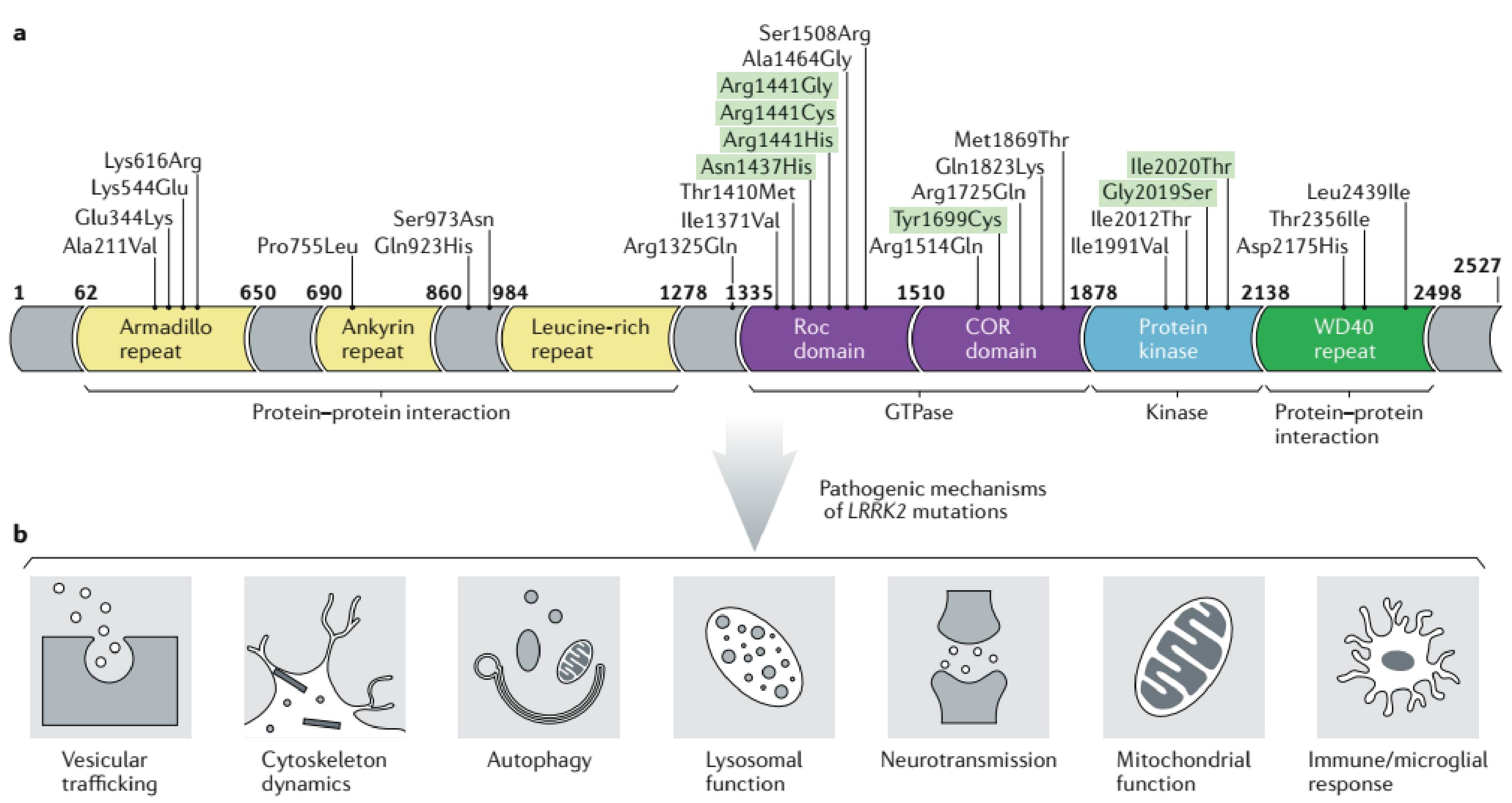
Our promise to you:
Guaranteed product quality, expert customer support.
 24x7 CUSTOMER SERVICE
24x7 CUSTOMER SERVICE
 CONTACT US TO ORDER
CONTACT US TO ORDER
LRRK2 Gene Editing 
Leucine-rich repeat kinase 2 (LRRK2) is a 280 kDa multi-domain protein with dual catalytic GTPase and kinase activities, as well as many protein-protein interaction domains. The GTPase domain of LRRK2 belongs to the Roco family of GTPases, characterized by a C-terminal of Ras (COR) regulatory domain and a Ras of complex proteins (Roc) catalytic domain. The kinase domain of LRRK2 belongs to the serine/threonine family of protein kinases, which obviously prefers threonine phosphorylation. Interestingly, both catalytic domains are seemingly linked, with functional GTPase activity required for kinase activity and many LRRK2 autophosphorylation sites located in the GTPase domain. The linked catalytic activities of LRRK2 may be important, because many mutations in these domains are causative for Parkinson’s disease (PD).
LRRK2-mediated Signalling
LRRK2-mediated signalling pathways include growth factor and survival, as well as death receptor and Wnt signalling pathways. Prominent examples are Akt, MAPK, Rac/PAK and PKA and Wnt pathways. Ca2+-mediated pathways with relevance for innate immune function also deserve a separate mention, including pathways mediated by the receptor TLR, and the transcription factors NFAT and NF-κB. Up to now, upstream regulation of LRRK2 is best described for the heterophosphorylation by the constitutively active kinases GSK3β and CK1α. These kinases and PKA phosphorylate residues in-between the ANK and LRR repeats, whereas the phosphatase PP1 mediates dephosphorylation of these phosphosites, thereby affecting the interaction with 14-3-3 proteins. In turn, this affects the subcellular localisation of LRRK2, possibly because the LRRK2-14-3-3 interaction facilitates cytoplasmic localisation. There is evidence that GTP-bound LRRK2 phosphorylates GTP-bound Rab proteins at membranes. This effect is likely increased by LRRK2 mutants, especially RocCOR mutants conferring increased GTP-binding.
 Figure 1. Upstream regulation of LRRK2. (Harvey K, Outeiro T F., 2019)
Figure 1. Upstream regulation of LRRK2. (Harvey K, Outeiro T F., 2019)
LRRK2 in Parkinson Disease
LRRK2 mutation is one of the most common known causes of PD. LRRK2 mutations usually manifest as late-onset PD that closely resembles idiopathic PD (iPD) in its clinical features and response to therapy. Almost all pathogenic variants are rare and only found in a few families. The major exception is the Gly2019Ser mutation, which is the most common and accounts for 4% of familial and 1% of sporadic PD cases worldwide; sporadic cases probably represent hidden heritability due to low penetrance. Genome-wide association studies have shown that, in addition to the known LRRK2 pathogenic mutations, some variants in this gene have a modest impact on the lifetime risk of iPD, suggesting that LRRK2 function influences susceptibility to iPD. This observation increases the possibility that LRRK2-targeted therapies could be effective for a broader population of patients with PD.
 Figure 2. Structure and function of LRRK2. (Tolosa E, et al. 2020)
Figure 2. Structure and function of LRRK2. (Tolosa E, et al. 2020)
Disease-modifying therapies for PD have been elusive, but LRRK2 has become a promising target for potential disease-modifying treatments. The underlying pathophysiological molecular process is expected to be similar in all LRRK2-PD patients. Pathogenic mutations increase kinase activity of LRRK2, and small molecule LRRK2 inhibitors have neuroprotective effects in some in vivo and in vitro models of PD. Small-molecule LRRK2 kinase inhibitors have been developed and are now considered suitable for clinical use due to their appropriate oral bioavailability, kinase selectivity and brain permeability, which is sufficient to expect a minimal risk of off-target adverse effects, on-target adverse effects and toxicity. Preliminary evidence for the efficacy of these compounds in rodent and nonhuman primate models of PD is being collated. Two LRRK2 kinase inhibitors that are in clinical development are known as DNL151 and DNL201. Another alternative is the use of antisense oligonucleotides (ASOs) to decrease LRRK2 expression levels, thus blocking LRRK2 activity, independent of the specific mutation and its functional outcome.
LRRK2 Gene Editing Services
CRISPR/Cas9 PlatformCB, one of the leading biotechnological companies specializing in gene editing, is dedicated to offering comprehensive CRISPR/Cas9 gene-editing services to a wide range of genomics researchers. Based on our platform, we can help you effectively LRRK2 gene deleted, inserted or point mutated in cells or animals by CRISPR/Cas9 technology.
➢ LRRK2 Gene Knockout: We offer LRRK2 gene knockout cell line and knockout animal model generation service with high quality. Typically, we develop CRISPR-mediated gene editing cell lines including HEK239T, Hela, HepG2, U87, but we can use other cell lines according to your requirements. Our one-stop KO animal model generation service covers from sgRNA design and construction, pronuclear microinjection to Founders genotyping and breeding.
➢ LRRK2 Gene Knockin: CRISPR/Cas9 PlatformCB provides the one-stop LRRK2 knock-in cell line and knockout animal model generation services, including point mutation and gene insertion. Our expert staff has succeeded in dozens of LRRK2 knock-in cell line generation projects, including stem cells, tumor cells and even difficult-to-handle cells. We also have extensive experience in incorporating CRISPR/Cas9 technology into animal models, which have been fully recognized by our clients.
If you have any questions, please feel free to contact us.
Related Products at CRISPR/Cas9 PlatformCB
| CATALOG NO. | PRODUCT NAME | PRODUCT TYPE | INQUIRY |
| CLKO-1545 | LRRK2 KO Cell Lysate-HeLa | Knockout Cell Lysate | Inquiry |
| CSC-RT1698 | Human LRRK2 Knockout Cell Line-HeLa | Pre-Made Knockout Cell Line | Inquiry |
References
- Dzamko N L. LRRK2 and the immune system. Leucine-Rich Repeat Kinase 2 (LRRK2), 2017: 123-143.
- Tolosa E, et al. LRRK2 in Parkinson disease: challenges of clinical trials. Nature Reviews Neurology, 2020, 16(2): 97-107.
- Alessi D R, Sammler E. LRRK2 kinase in Parkinson's disease. Science, 2018, 360(6384): 36-37.
- Cookson M R. LRRK2 pathways leading to neurodegeneration. Current neurology and neuroscience reports, 2015, 15(7): 42.
- Esteves A R, et al. LRRK2, a puzzling protein: insights into Parkinson's disease pathogenesis. Experimental neurology, 2014, 261: 206-216.
- Harvey K, Outeiro T F. The role of LRRK2 in cell signalling. Biochemical Society Transactions, 2019, 47(1): 197-207.